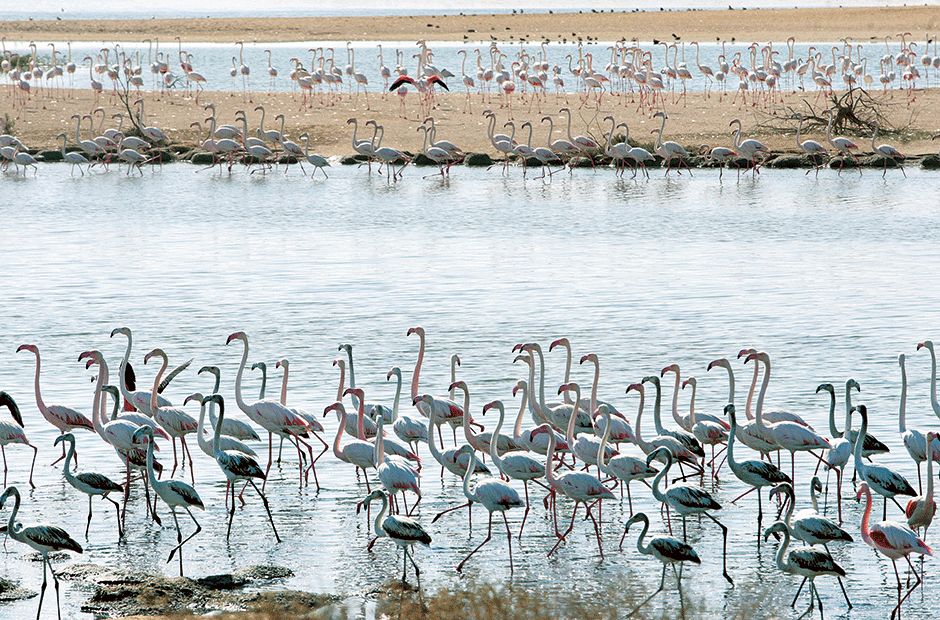
The UAE is not a country often associated with wildlife and biodiversity, but rare animal and plant species are thriving beyond the concrete jungle. In recent years, by placing greater focus on conservation, the country has been working to protect its flora and fauna and even breed various endangered species such as the Arabian leopard. It currently has 60 protected areas — 38 terrestrial, 21 marine and one coastal, according to the Convention on Biological Diversity.
Here are few conservation centres:
1. Al Wathba Wetland Reserve: The Abu Dhabi park has more than 250 bird species, 37 plant species and a host of aquatic life, but its biggest attraction is its flamingos. It has the world’s second-largest population of dugongs.
2. Al Hefaiyah Mountain Conservation Centre in Sharjah: The 12-sq-km centre in the Hajjar mountains is home to critically endangered species such as Arabian leopards, wolves, snakes, Arabian tahr and striped hyenas.
3. Al Ain Zoo: It has the world’s largest captive population of the elusive Arabian sand cat. The zoo maintains specialised holding and breeding facilities for the felines and hosts conservation workshops.
4. Sir Bani Yas: At 87 sq km, the Abu Dhabi reserve is home to some three million trees. Conservation of the Arabian oryx was an early project; after a successful breeding programme it now has more than 10,000 oryx.
5. The mangroves along Abu Dhabi’s coast: Spanning 72 sq km, the tropical shrubline is ecologically important for fisheries. The plants absorb an average of 3,754 tonnes of carbon dioxide per hectare.
6. Wadi Wurayah: Lying in the north of Fujairah, the wadi, with its natural springs and pools, is a rare sanctuary. Its main attraction is a waterfall, the only in the country. It is a refuge for mountain lynxes, foxes and Arabian tahr.












